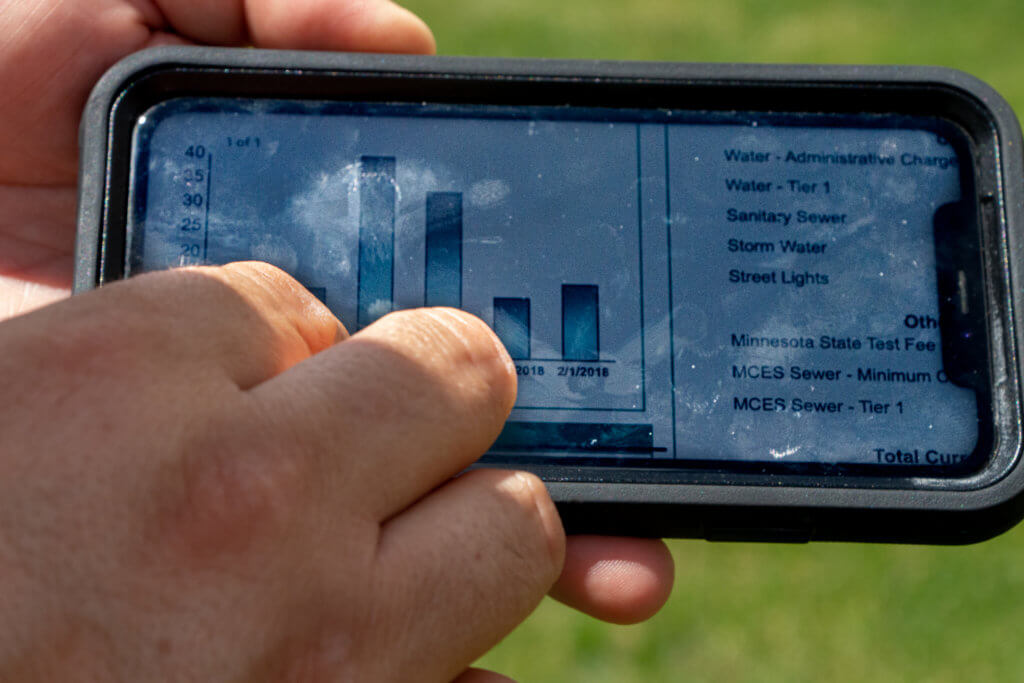News
Smart Irrigation Reduces Water Waste
Fri, Jul 19, 2019Problems with home sprinkler systems often go unnoticed. Sprinklers are timed to run early in the morning when residents aren’t likely to see a broken or misaligned sprinkler head. Automated systems usually run every other day, regardless of a rainy forecast. The cumulative effect of inefficient and overzealous watering is taking a toll on our water supply.

Few people realize that the land of 10,000 lakes may soon face a water shortage. While surface water is abundant in our region, the majority of the metro relies on groundwater. This out-of-sight natural resource is far from limitless. Groundwater isn’t replenished as quickly as surface water, and our supply is already dwindling.
The Prairie du Chien aquifer underlies much of Iowa, Minnesota, and Wisconsin and serves as our primary source of groundwater. Current rates of water use are not sustainable. If these rates persist as population continues to grow, some areas may have less than 50% of water they need by 2030.
Becoming conscious of water waste is the first step to making a change. The EPA estimates that as much as 50% of the water used outdoors is wasted. A combination of evaporation, wind, and inefficient irrigation methods adds up to a massive loss of a precious resource.
New technology offers a simple solution
In 2011, Enrique Arias moved to Woodbury from Mexico City. He grew up in the deserts of Chihuahua, and he’s acutely aware of the water required to sustain the vast swaths of grass that cover our metropolitan landscape. When he heard about the city’s Smart Irrigation Controller Program from a friend, he was eager to participate.
The City of Woodbury has distributed more than 2,000 smart irrigation controllers to residents in a large scale effort to save water. Eligible residents can purchase a Rachio 3 Smart Irrigation Controller directly from the city at a low price. The Environmental Protection Agency certifies these smart controllers to reduce residential homeowners’ outdoor water use by at least 20%.
In Woodbury, residents use three times as much water during the summer, and an estimated 42% of the city’s water goes to irrigation. This seasonal surge has already put a strain on the aquifer that supplies drinking water for the city and nearby communities. Woodbury’s population is projected to grow another 34% by 2040, but the city’s goal is to keep water usage flat.
Smart irrigation controllers work with pre-existing residential lawn sprinkler systems to water lawns efficiently. The controllers monitor rainfall and temperature to water only when necessary. Users report data to the controller to make sure their yard, including gardens and sunny patches of grass, stay green. Residents that switch to smart controllers save an estimated 30,000 gallons of water each year.
The Rachio Smart Controller includes a smartphone app that charts a user’s decrease in water usage. Visible progress has proven to be a big motivator for Enrique. His sprinkler system has used 60% less water since he installed the Rachio Controller last summer. “You start playing the system to see how little you can water,” he says. “It appeals to your inner geek.” Using a Rachio Controller inspired Enrique to purchase a Nest thermostat, and he’s hoping to see similar improvements in his home heating bill next winter.

Efficient watering can have another unexpected payoff. Lawns that aren’t overwatered become drought resistant and require less frequent mowing. And of course, Enrique’s home water bill is way down. “It’s a no-brainer,” says Enrique. “If you don’t do it for water conservation, do it for the money.”
Quick Tips to Reduce Home Water Waste
- Check an automated irrigation system for leaks and broken sprinkler heads at the start of each summer.
- Install a rain gauge in your yard. Grass needs no more than one inch of water per week, including rainfall.
- Set your mower blade to three inches tall to promote deeper grass roots. Deep root systems are more drought resistant.
- Install a smart irrigation controller — or simply run your irrigation system in manual mode only when needed.
- Establish native plants in your gardens that thrive with normal rainfall.

